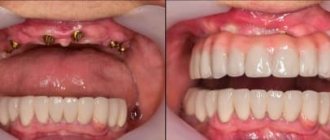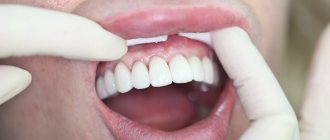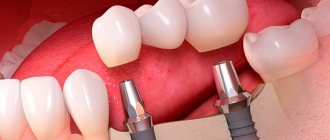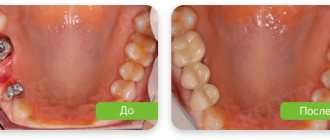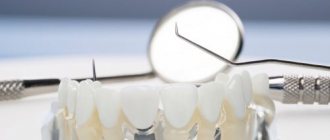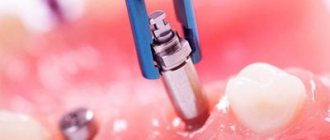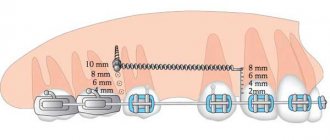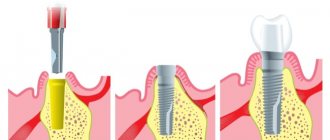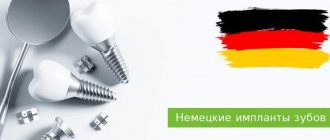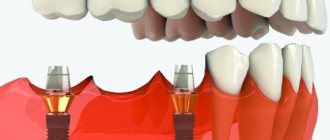Patients who have an idea about traditional implantation often wonder what basal implantation is and what is its feature. Basal implantation is considered a type of technology for the use of implants, which is practiced when patients have a lack of bone tissue. In this case, the emphasis shifts to the deep (basal) bone layers, which are not subject to atrophic processes.
To understand the peculiarities of using basal implantation, which is called single-phase, let’s first try to consider in a simplified form the issue of the anatomical structure of the bone tissue of the jaws. The roots of the teeth are fixed in the bone tissue, but if a person loses them, then the bones are at risk of deformation and atrophy due to weakening or complete lack of load. The fact is that the entire chewing process activates the metabolism in bone tissue, and in the absence of teeth, their activity stops, and the bone, deprived of the load, becomes deformed and noticeably decreases in volume.
Spongy layer
- a relatively porous and more susceptible to atrophy section of bone tissue, where implants are usually implanted using the traditional technique;
Cortical layer
- more dense, consisting of mineral salts;
Basal layer
- the most deeply located, containing many strong partitions and practically not deformed in the absence of teeth.
Taking into account the strength of the structure of the basal layer, root-shaped basal implants are fixed in it, opening up the prospect of restoring new teeth without building up bone tissue. In addition, unlike traditional implantation, basal dental implantation does not require a long waiting period for prosthetics. Accelerated basal implantation technique, often called “single-stage implantation”
, allows you to start prosthetics 3-5 days after the end of the implant procedure. With the traditional form of implantation, the distance from implantation to prosthetics reaches 3-6 months.
What is basal implantation?
Let's try to give an analogy to make it clear what basal implantation is. If you place a stick in the ground using only the top loose layer, it will not hold well. But if you use deeper layers that are not washed out by water or exposed to other external influences, the stick can be secured much more firmly and will last longer. The same goes for basal dental implantation.
Basal complex is a type of implantation in one stage with immediate loading. The main difference between the basal implantation method and other protocols is that the installation of implants does not require the presence of alveolar cancellous bone, the most central part of the jaw bone tissue. It is used to install most classical implants. Basal implants work with fundamentally different sections: the cortical plate, basal bone, buttresses of the skull, nasal, zygomatic and sphenoid bone. To ensure that the bone and implant have a large contact surface, artificial roots are installed at a certain angle. Angling also helps to select the most suitable areas of bone and place implants bypassing the sinuses and nerve endings.
Unlike classic implants with a rough surface, basal implants are smooth and have a special antimicrobial coating. According to many studies, it is the absence of a rough surface in combination with the use of deep bone sections for implant installation that is an excellent prevention of peri-implantitis and, as a result, minimizes the risk of rejection in the long term. This is especially true in the presence of inflammatory processes in the oral cavity and periodontal tissues in particular.
The method is ideal for patients with complete edentia and is not suitable if only one tooth needs to be restored. The minimum is three missing teeth.
Fresh questions about the dental implantation service in Orel
- G
Guest asks a question to the Dynasty clinic, December 23, 2022, 18:50 Please tell me, under anesthesia, pull out your wisdom teeth - E
Ekaterina asks a question to the clinic Bogdanova Dental Clinic n n, December 12, 2022, 10:24 pm Hello, do you work with already installed braces? And is it possible to remove your braces and install retainers?
- E
Ekaterina asks a question to the clinic Dentistry Center 32, December 12, 2022, 10:13 pm Hello, do you work with already installed braces?
- T
Tatyana asks a question to the clinic Bogdanova Dental Clinic n n, September 22, 2022, 11:00 Do you provide dental treatment under anesthesia?
Basal method of dental implantation - indications and contraindications
The main restrictions on refusing basal implantation are the absence of 1–2 teeth, as well as general contraindications to any other surgical intervention. At the same time, Basal complex allows you to solve problems that classical implantation cannot solve.
Indications for basal implantation are complete or multiple absence of teeth, which is accompanied by the following problems and needs:
- advanced forms of periodontitis and other dental diseases, when the only way out is their removal, for example, with a high degree of mobility or loss, in the presence of strong cystic formations on the roots;
- acute and chronic forms of gum disease, accompanied by severe recession of the gingival contour and exposure of the roots;
- inflammation and acute atrophy of spongy bone tissue;
- desire to change dentures to implants;
- the need to speed up treatment;
- reluctance or inability to grow bone;
- advanced age of the patient;
- restoration of teeth in experienced smokers.
Features of the Basal complex
- No bone grafting is required.
- Basal implantation and tooth extraction are easily combined and are carried out in just one approach.
- Before the operation, a thorough 3D diagnosis is carried out, as well as three-dimensional modeling of the treatment process.
- At the surgical stage, templates are used to facilitate the process of implantation and allow their installation to be carried out as accurately as possible. During the implantation process, all manipulations are also monitored using 3D X-ray diagnostic technologies.
- Prosthetics take place within 3 days to ensure chewing load on the bone. Dentures can be fixed to implants using either cement or screws.
- When using zygomatic implants, they are fixed at an angle, bypassing the maxillary sinuses.
- For basal implantation, solid one-piece or one-component implants are used in an amount of at least 8 pieces.
Why does the installation of basal implants take place without bone grafting?
Classic two-stage dental implantation is only possible if there is a sufficient amount of cancellous bone tissue. If there is a deficiency, bone augmentation is required before surgery. The basal method does not require this. Everything is explained simply:
- Other layers of bone are used, the density and hardness of which does not change due to the absence of teeth, since their chemical structure is different from the alveolar (spongy) layer.
- For the basal method, solid implants are used. They are often longer and thinner than the classic two-piece. This allows implants to be installed into the bone tissue at an angle with penetration into the deep layers.
- Basal implants are installed according to the principle of compression of bone tissue around its axis when screwed. That is, during implantation, the bone is not lost, but is compacted around the artificial roots. In this way, excellent primary stabilization is achieved with a force of up to 100 Newtons (for comparison: with the classical approach - no more than 30 - 40 Newtons). This approach has been used for more than 50 years for fractures and joint injuries. The principle of operation is also known by the name of the scientist-inventor G.A. Ilizarov.
- After fixing the implants in the bone, metabolic processes are immediately activated. The solution to this problem is taken over by the prosthesis. The patient chews food, improving blood supply to bone tissue. The cells are revived, replacing old and damaged ones, filling the space and increasing bone density around the artificial roots. Osseointegration occurs faster.
- The prosthesis has another important task - to fasten, connect or splint the implants with its frame, thus eliminating the risk of their mobility and displacement of the structure. The metal base connecting the implants to the prosthesis does not change its position even under heavy loads.
Pros and cons of basal implantation
- Time frame – prosthetics using this method will not take the patient much time. According to the protocol, implants should be “loaded” on day 3. Maximum taking into account the need to prepare for the operation, with all possible corrections of the prosthesis to suit the patient’s bite, compliance with the requirements for aesthetics and beauty of the smile, the entire treatment will take no more than 7 days.
- Appearance - the artificial gum is made of translucent acrylic, there is very little of it. When smiling and talking, no one will notice the border of the prosthesis. And the base will brilliantly cope with its task - it will protect the gums from injury in case of inflammation and hide existing cosmetic defects of the mucous membrane, if any.
- Rejuvenation is a pleasant “side” effect of prosthetics. Wrinkles around the mouth will be smoothed out due to the normalization of the functioning of the facial muscles.
- Pleasure from food - you can eat everything! Chewing food is welcome - it speeds up the process of bone tissue regeneration.
- Teeth can be restored even with a large deficiency of bone tissue.
- Contraindications - minimum. Even smoking, inflammation of bone tissue, periodontitis, and periodontal disease are not an obstacle to surgery. Implants work with deep parts of the bone, which are sterile and inflammation does not reach them.
- The implants are securely fixed - the fixation force is 2 - 3 times higher than that of classic models.
- Rehabilitation is very fast. Thanks to minimal trauma and the use of bio-membranes, which are created from the patient’s own blood plasma, tissues are quickly restored. There is only mild pain, comparable to the discomfort after tooth extraction. It goes away in 3 – 7 days. On an individual basis, the doctor prescribes antibacterial and painkillers that will reduce pain to “no”.
- The risk of implant rejection is minimal. Fixation in sterile parts of the bone tissue and preservation of the gums eliminate inflammation. An individually developed 3D plan for installing implants for each patient and the same control throughout the operation to install implants does not allow errors.
- The prosthesis is easy to care for.
- The prices are incredible. Basal implantation will cost less than classic two-stage implantation.
The main disadvantage of basal implantation is that Russia currently lacks qualified specialists. While implantation using the Basal complex method requires experience and knowledge. In one person, the doctor must be a surgeon with excellent knowledge of the anatomical structure of the maxillofacial system, an experienced orthopedist, an implantologist himself, as well as a competent user of software for modeling treatment results in 3D.
Advantages of the technique
- Basal implantation can be used with virtually no restrictions; basal implants, due to their specific shape, can be inserted into areas of the bone where it is impossible to install traditional screw implants.
- The need for bone augmentation and transplantation, accompanied by serious surgical interventions, is eliminated.
- One-stage dental implantation allows you to immediately implant a basal implant after tooth extraction and immediately load the prosthesis 3-4 days after the procedure.
- The low degree of trauma and accelerated healing time contribute to the inclusion of this procedure in the category of bloodless operations. Due to their bloodlessness and low morbidity, basal implants can be implanted in patients with HIV, hepatitis, and diabetes.
Computer-aided treatment planning
It is impossible to prepare for basal implantation without 3D technologies. Bone tissue will not grow, so it is important to carefully and accurately plan treatment. The computer helps you select a model, calculate the angle of inclination of the implant, and choose the ideal location for it.
Computed tomography is also strictly required. From the images you can evaluate the quantity, quality and characteristics of bone tissue. Implants should not touch the sinuses or nerves. The examination results are processed through a computer, and by the time treatment begins, the doctor is very clear about the next steps. A detailed plan for the placement of implants and the developed parameters of the prosthesis helps you not to go astray.
In addition to computer technology, when creating individual orthopedic structures, special devices are used to measure the characteristics of the patient’s bite and occlusion.
Before installing the implants, again using virtual modeling, an individual template is prepared from elastic material for each specific patient. It is fixed on the gums - this stencil allows you to install the implant perfectly and without displacement in accordance with the chosen location.
What prostheses are used?
A model of the prosthesis is created before treatment using a computer program; the design is subsequently improved and verified using impressions, which are taken after the installation of basal implants. The mucous membranes need time to recover, so immediately after fixing the implants, the prostheses are not attached. It is recommended to wait 1 – 2 days.
For the first six months to a year, as a rule, an adaptive prosthesis with a metal frame and plastic crowns is installed (if desired, it can be left for its entire service life - up to 3 - 5 years). When the implants take root (and this will take a maximum of a year), the temporary prosthesis must be replaced with a permanent one. Crowns can be made of zirconium or metal ceramics.
But there is another option, which modern technologies allow: in 75% of cases, you can immediately install not a temporary, but a permanent prosthesis made of polymer materials. No need for re-prosthetics. Such a modern prosthesis lasts at least 10 years and is subject to adjustment to the bite directly in the patient’s mouth. The structure can be secured using cement or screw fastening.
Dental implantation in dental clinics in Orel
- Denta+
- Sovetskaya street, house 11
- +7 (4862) 47-… show all
- Mon-Fri 9:00–20:00; Sat 9:00–14:00
4.5 ratings: 6
- Dental clinic practice dent
4.4 ratings: 5
- Happy smile
4.4 ratings: 5
- Clinic St.Dent
4.4 ratings: 5
- Dynasty
4.4 ratings: 5
- Biostom
3.8 ratings: 5
- Almazdent
4.5 ratings: 4
- Dental clinic Bogdanova n n
4.8 ratings: 5
- Smile
4.0 ratings: 3
- Pearl
4.3 ratings: 9
- Dentistry Center 32
4.0 ratings: 8
- Guarantor, sir
4.0 ratings: 4
Further
What can be used instead of Basal complex?
One alternative solution is to install conventional removable dentures. However, the service life of orthopedic structures fixed only on the gums is short-lived, they are inconvenient to use, and they also lead to bone tissue atrophy, which requires frequent relining. An alternative may be solutions such as implantation of All-on-4 or All-on-6 - on four or six implants, respectively. These protocols are also used in cases of complete absence of teeth and involve implantation with immediate loading. But unlike basal implantation, they have certain limitations in the volume and quality of the jaw bone and are not used in cases of pronounced atrophic processes.
Briefly about all-on-4
The all-on-4 implantation protocol was first used in 1998, beginning a new era of dental prosthetics. Portuguese doctor Paulo Malo installed a complete fixed denture on 4 dental titanium implants. Four artificial roots successfully withstood the load, fully compensating for the aesthetic and chewing functions of the teeth.
Today, the all-on-4 technique is used to restore the upper and lower jaws of patients of almost any age. The implantation protocol involves the installation of 4 two-piece dental implants:
- the lower part is the metal implant itself, which takes on the functions of the tooth root and is responsible for the rigid fixation of the denture in the oral cavity;
- the upper element is an inclined multi-unit abutment for attaching artificial teeth to the implant and maintaining the correct anatomical position of the prosthesis even with an inclined arrangement of titanium rods.
Four implants are attached to specific points:
- two - vertically in the anterior part of the jaw;
- two - on the sides at an angle of up to 45 degrees.
This situation is not accidental. Multidirectionality increases the rigidity and stability of fixation of the denture, and implantation at an angle ensures more complete contact of the artificial root with bone tissue, simplifying healing.
Implants are installed in different ways:
- through surgical templates - a minimally invasive technique with a low level of surgical intervention, when the implant is implanted by puncture at predetermined points;
- according to the classical protocol - with peeling of the gingival flap;
- at the time of tooth extraction - a one-step procedure for implanting an artificial root.
Doctors may also consider other methods based on the patient’s individual clinical case.
What is better – classic or basal implantation?
Basal implantation is indicated for complete or almost complete absence of teeth. It is carried out both in case of bone tissue deficiency and in the presence of acute forms of periodontal tissue diseases. Classic implantation will not work in this case - the operation requires bone tissue augmentation. And this is extremely difficult, expensive and will take a lot of time. Therefore, in such situations, patients often hear a refusal and a recommendation to stay with removable dentures. We can safely say that today there is no full-fledged alternative to the basal implantation technique, especially in complex clinical cases.
All the disadvantages of all-on-4
The implantation technique has many advantages, but a few disadvantages are discussed on forums and in reviews. Among them, obvious, individual, and also invented ones stand out.
Disadvantages of all-on-4: classic
The obvious disadvantages of all-on-4 include:
- The need to find a good dental clinic. The original all-on-4 protocol requires paying increased attention to equipment and having the appropriate software, tools, and materials available. If alternative preparation methods are used in dentistry, there is a risk of deterioration in the quality of the service provided. It is not a disadvantage to choose among several brands of dental implants rather than a total installation of Nobel Biocare, since in this case the patient selects treatment according to his financial capabilities.
- Search for an experienced implant dentist. The doctor’s experience is more important than the material resources of the chosen dentistry. A good doctor not only thoroughly knows the features of the chosen brand of dental implants for all-on-4, but is also ready to quickly make smart decisions. Rating lists of specialized dentists in Moscow, patient reviews, and recommendations from friends help you choose an implantologist.
- Price. All-on-4 prosthetics seems financially expensive. Especially in comparison with the manufacture of removable dentures. But a comparison of long-term costs, wearing comfort and other factors indicate the benefits of installing teeth “all on 4 implants.”
- Payment for two prostheses instead of one. The classic all-on-4 protocol obliges the doctor to immediately install a temporary denture, which is replaced with a permanent one after several years of wear. The patient pays for both designs, which often seems like a bad decision. But there are benefits - the presence of teeth immediately after implantation surgery, time to get used to new jaws, the opportunity to save up for an orthopedic product made of the best material.
Disadvantages of all-on-4: clinical
Individual negative features of all-on-4 implantation are considered:
- It is difficult to select dentures for patients with a gummy smile or a short upper lip. The fixed structures on a titanium beam recommended by implantologists are massive - they reduce the space in the vestibular part of the mouth and create inconvenience. This factor also affects aesthetics. The solution will be the competent selection of a dental prosthesis - a bridge made of zirconium dioxide on the original zirconium frame "Nobel Procera" or ceramic "Prettau".
- Contraindications. Patients with diabetes or autoimmune diseases will have to consider other methods of restoring the dentition. Smokers will be offered basal implantation, which eliminates the risk of titanium root rejection due to the deep immersion of implants into bone tissue.
Disadvantages of all-on-4: myths
Invented disadvantages of all-on-4:
- It is impossible to install a complete denture with 14 crowns. This is not required. 4 titanium screws provide reliable support for an artificial jaw for 12 teeth. And this amount is quite enough to compensate for all the functions of the dentition. If an increased number of crowns in the prosthesis is required, an all-on-6 protocol or another dental restoration alternative is considered.
- A small number of support points leads to bone tissue atrophy. Slight atrophy around the implant neck is inevitable even when installing individual titanium roots. As for all-on-4, the angular position of the side implants creates a load on almost the entire jawbone, eliminating the risk of rejection.
- Refusal to immediately install a permanent prosthesis. The sequential installation of temporary and permanent prosthesis has good reasons. After restoration of the dentition, the bite and chewing habits change slightly, which requires certain adjustments to the orthopedic design. Also, implants are subject to a moderate, clearly calculated load, and the permanent system is sometimes excessively massive.
- Do not combine methods of fixing the prosthesis. The point is that doctors do not put new teeth on screws and cement at the same time. But that’s not how it’s done. These are two separate methods with their own advantages and disadvantages. The cement connection is rigid, requiring cutting of the prosthesis when removing it. Screw - more expensive, but more convenient.
The pros and cons of all-on-4 - as well as objections and myths - are resolved during a consultation with an implantologist. The doctor will assess the clinical situation, answer questions, and select a treatment regimen. Patients are advised to visit several specialists to determine their opinions and find a beneficial solution.
Cost of treatment
The final price of basal implantation in Moscow depends on the complexity of the case, the manufacturer of the implants, as well as the materials of the selected denture. However, the patient always has a choice. Thus, the cost of basal implantation on the upper or lower jaw is 265 thousand rubles with an adaptive prosthesis, the service life of which is 3–5 years. With the installation of a permanent polymer ceramic-composite prosthesis, the installation of basal implants will cost 350 thousand rubles. With the fixation of a metal-ceramic prosthesis, the entire procedure will cost 450 thousand rubles.
Basal prosthetics for complete absence of teeth - price
Many clinics promote basal implantation as a cheaper method of dental prosthetics for completely edentulous patients. Indeed, even a superficial analysis of the prices for these two methods shows: the average price of one tooth restored using classical implantation in Moscow is about 40-45 thousand rubles, and when restoring the entire jaw using basal implantation, the price of one tooth is about 20 thousand.
The cost of prosthetics for the entire jaw will largely be determined by the implants chosen by the patient: if you choose budget models, it will be possible to keep within 200,000, and if you choose premium implants, the price for basal implantation in Moscow can be 500,000 rubles.
We urge our patients not to chase cheapness and approach the choice of prosthetics method with all seriousness. Despite the fact that we do not use basal implantation, we will select a method of prosthetics for any patient, taking into account his financial capabilities. In this case, the main selection criterion will be health safety!
Recommendations for choosing a clinic and implantologist
As mentioned above, basal implantation in the form in which it allows you to achieve high results is practiced today by very few specialists. In order not to run into a “fake” and not to become a victim of inexperienced doctors, but to get a guaranteed high result of the work done, I recommend paying attention to the following points.
The most important thing is that the doctor has a certificate issued by the International Implant Foundation. It is this association that has been actively studying and introducing into practice methods of one-stage implantation with immediate loading for many decades, including the basal complex. Currently, the foundation has introduced a five-step training that every specialist practicing these protocols must undergo. Naturally, the doctor must be accredited by the company that manufactures the basal implants.
